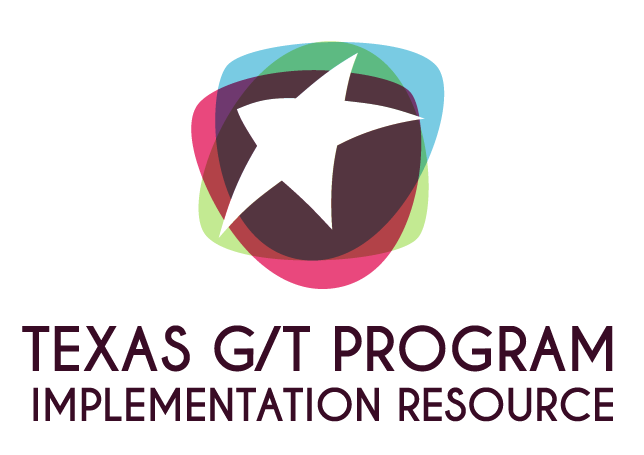G/T Coordinator – Teacher – Counselor
The role of the gifted/talented (G/T) coordinator, teacher and/or counselor:
The G/T coordinator, teacher, and/or counselor in a school may be one and the same. After the school district has a locally-developed G/T program that meets the requirements outlined in law and is approved by the local board of trustees, the G/T coordinator, teacher, and/or counselor implements the identification of the students and then serves them in the gifted/talented program.
1. How to identify G/T students in your school and ensure all populations are represented
The counselor or G/T coordinator, with support from the administration, reviews the local definition of gifted and the district’s demographics to learn how their campus G/T population reflects the district population. The district then advertises open nominations for G/T students in their community. After receiving parent permission to test, they screen students for their G/T program. A selection committee is appointed to determine the placement of students.
Student Assessment Documents and Procedures
2. How to design and deliver the program to assure quality instruction
Program delivery can be a challenging aspect of the gifted program. Limited time, personnel, and financial resources can be overcome only by the willingness of the instructional leader to be a creative problem solver.
The G/T coordinator or teacher should be creative in the development and delivery of the G/T program. The number of identified students in a grade or on a campus may influence the program design and delivery system.
Service Design Documents and Procedures
3. What is taught, what resources are used, and what curriculum is implemented
Time can make curriculum development (vertical alignment) for the gifted program an overwhelming task for the G/T coordinator or teacher. Some districts express the need for state curriculum, or at least a state-developed scope and sequence for the gifted. Some districts purchase commercial curriculum products at the elementary level, etc.
One strong option is the Texas Performance Standards Project (TPSP). Students in grades K–12 are involved in a program that helps students create advanced-level independent study projects. These projects are assessed using a rubric that helps measure the depth and complexity of instruction. The TPSP is fully-developed, aligned to the TEKS, and free.
Curriculum and Instruction Documents and Procedures
4. How to ensure quality instruction
It is imperative that there be ongoing assessment of the students in the G/T program, as well as the program itself. Teachers of the gifted use both formative and summative assessment as part of their instruction.
Each year, the G/T coordinator conducts a program evaluation and reports the findings to the campus and district committees and the local board of trustees. The program evaluation must include surveys from the G/T students, parents, teachers, and administrators. The campus and district committees will review the findings, make changes, and include the changes in the campus and district plans.
Ongoing professional development is essential.
Quick Links
Texas Education Agency, Gifted Talented Education
http://tea.texas.gov
Texas Performance Standards Project
http://www.texaspsp.org/
Equity in G/T
https://gtequity.tea.texas.gov/
Regional Education Service Centers
http://tea.texas.gov/regional_
